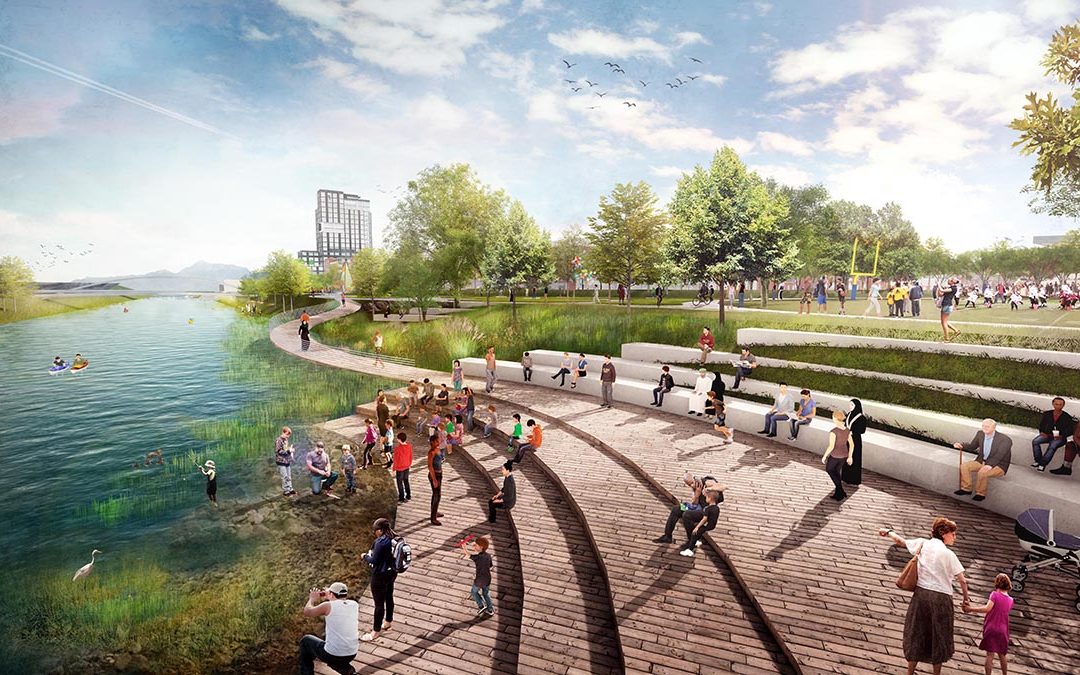The pandemic has been a shocking change to our normal way of life. It has overwhelmed our front-line workers, pushed the capacity of our health care system to its limits, and revealed how deep-rooted inequities pose even greater challenges for people of lower income and others who have historically had less power or privilege. Cities everywhere are facing a health crisis and the pandemic is rapidly bringing the health issues to light. Obesity, asthma, heart disease, mental health, and life expectancy are just a few of the health issues affected by environmental factors in our cities and neighborhoods, which are intimately connected with environmental and social conditions. During this unprecedented time, we ask what role can urban design play in creating healthy and more livable cities?
Parks and open spaces have turned into critical instruments of physical and mental health for our friends, families, and neighbors in every community. Walking, biking, and running have become more than a form of daily exercise for dedicated people with time. They now serve an essential personal need to promote mental restoration, physical health, and appropriately distanced forms of social interaction. The pandemic has placed a renewed emphasis on improving our cities and neighborhoods to promote active living, healthy eating, and to advance equitable health outcomes, thus decreasing long-standing disparities in historically disadvantaged areas.
What approaches can be undertaken to improve living conditions and create healthy and more livable cities for people?
Livable Cities Studio has intentionally focused on health and wellness at the forefront of projects by establishing performance-based targets that guide decisions and become drivers for change in the way communities grow and evolve. Our recent work on the National Western Center campus and Sun Valley Neighborhood in Denver are two examples where we were able to apply this approach to some of the most disadvantaged neighborhoods in the city. At the National Western Center campus in Denver, our team began by working closely with stakeholders to develop an initial set of goals to inspire a healthy and vibrant way of life, promote recreational opportunities, offer multi-modal connections, and provide access to healthy food for all populations. While the goals established the aspirational targets, they lacked the detailed information necessary to understand how health and wellness would affect everyday users and people living in the community.
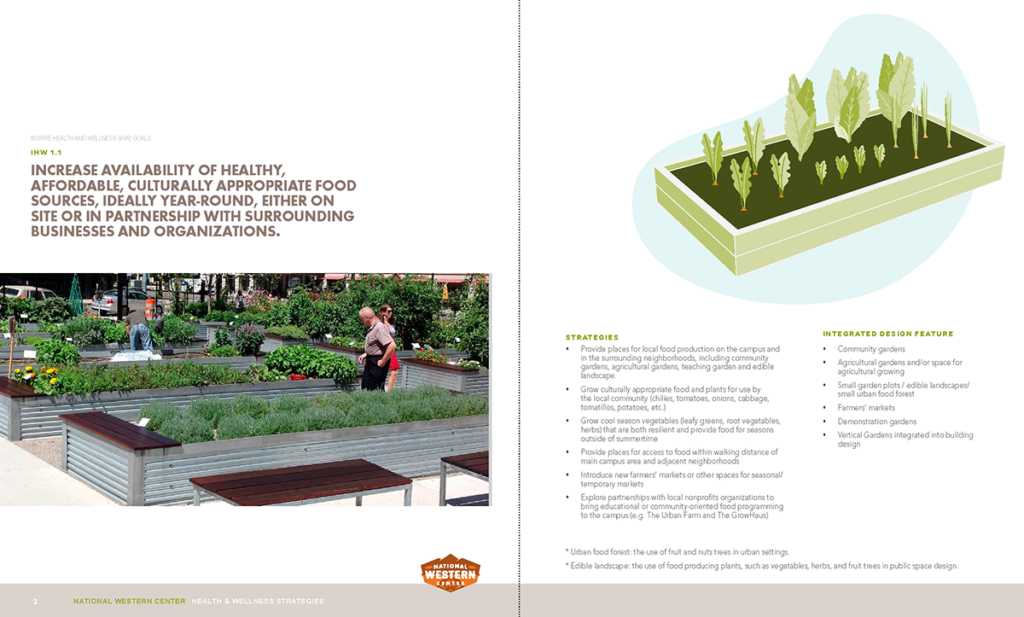
We addressed this by conducting a public realm and user experience study to identify specific design elements and site features to help meet the health and wellness goals, including the integration of active design elements and programming in public spaces. The user experience study included a series of interviews with various user groups to develop an understanding of how people will use the campus which informed what we should consider in the design and programming of the campus spaces to enhance the user experience.
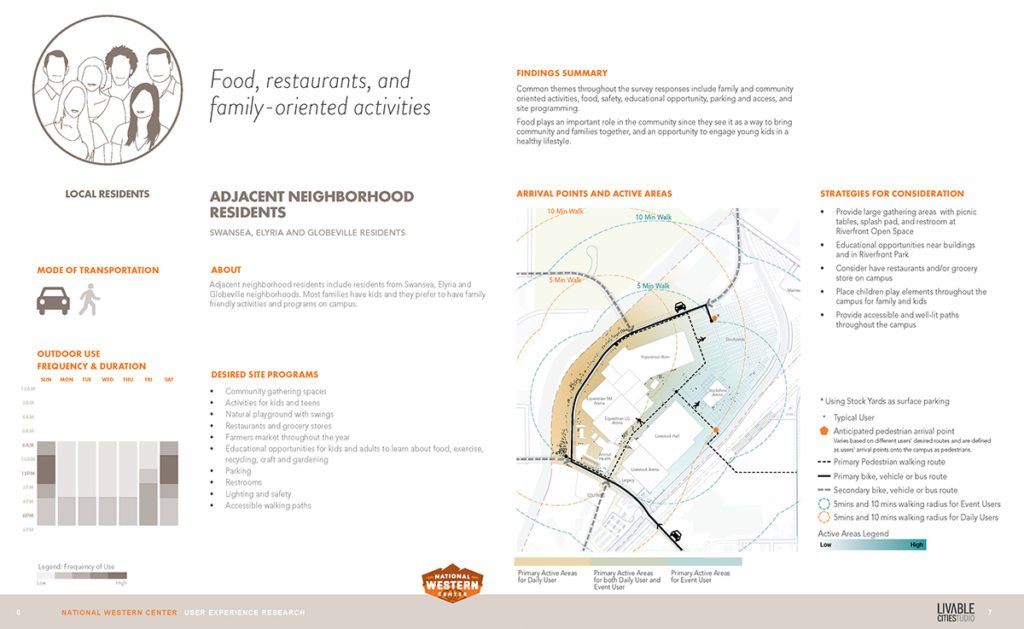
The outcome included recommendations for strategies and integrated design features to be included in the public spaces throughout the campus, and because the campus sits at the center of three surrounding neighborhoods, access and benefit to the broader community became a central theme. Health and wellness goals and features were established for the plaza spaces, courtyards, riverfront park and exterior spaces between buildings, as well as recommendations for campus buildings.
This approach is also an integral part of Denver Housing Authority’s (DHA) redevelopment in the Sun Valley neighborhood. Thanks to the visionary leadership of DHA and some fantastic groundwork from Mithun, the project is guided by the Sun Valley Healthy Living Initiative, which includes an extensive Health Needs Assessment and Framework, Action Plan, and Guidelines. Having this foundation of research and information is critical to address underlying issues that drive health disparities.
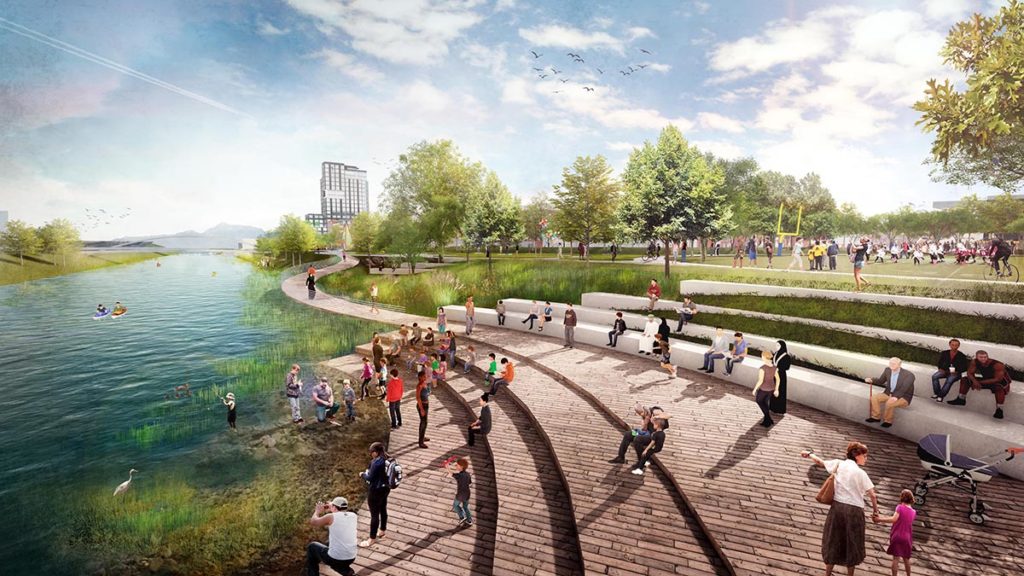
Livable Cities Studio is now moving this forward by developing Urban Design Standards and Guidelines that will guide the design of park, open spaces, public realm, and buildings to achieve healthier living and wellness for the community. The public realm network of safer and more enjoyable spaces encourages biking, walking, and increased use of the outdoor spaces. Building and neighborhood design principles emphasize design for natural light and ventilation, optimized solar orientation, views of nature, and increased connectivity through open breezeways and semi-public courtyard that create places for playgrounds and fitness areas.
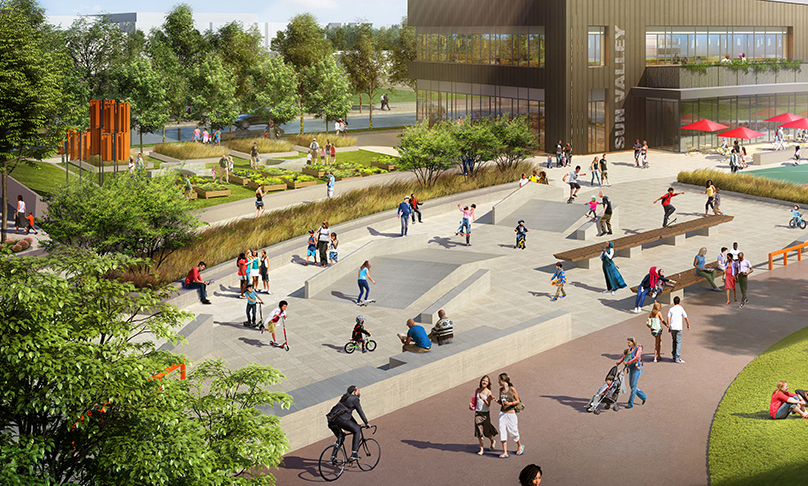
Keys to the success in Sun Valley is DHA’s long-standing relationship with the community, where they have spent years working alongside residents, listening, and actively partnering in the planning process. This ongoing conversation with the community is a testament to DHA’s continued reliance on regular community meetings, where residents and stakeholders are involved at every step of the planning process. This transparent relationship with the community is a critical step in providing a path to greater health equity in Sun Valley.
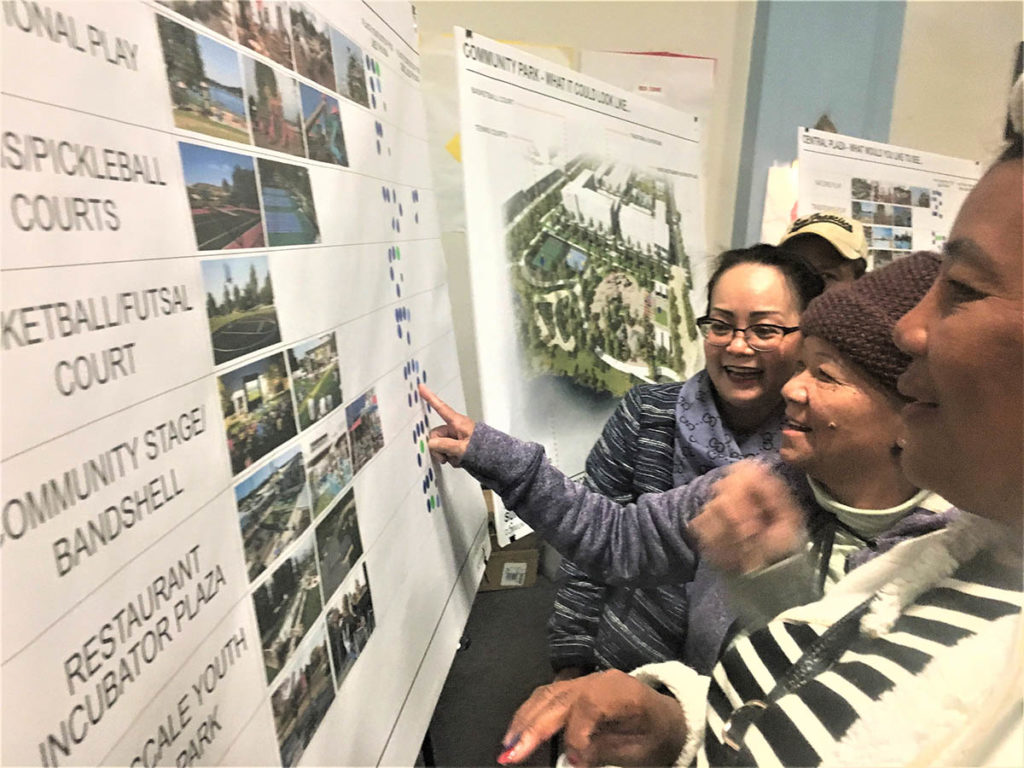
By prioritizing performance and outcomes that target health and wellness from the beginning, these efforts hope to shape healthier living environment for residents and visitors in relatively dense center city neighborhoods. Now, more than ever, we can operate with a sense of urgency to find better solutions that bring health and wellness to the forefront of the conversation in our cities and communities.

